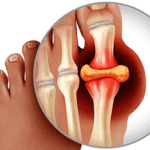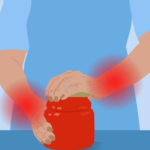Introduction
Arm pain can arise from various causes, including muscle strains, tendonitis, nerve compression, or even referred pain from other conditions. While medical treatment is essential for severe or persistent pain, many home remedies can help alleviate mild to moderate arm pain. This article explores several effective home remedies for arm pain, providing you with natural ways to manage discomfort and improve mobility.
Home Remedies
Rest and Activity Modification
- Rest: Avoid activities that exacerbate the pain, giving your arm time to heal.
- Immobilization: Use a sling or brace to support the arm and prevent further injury.
Cold and Heat Therapy
- Cold Therapy: Apply an ice pack to the affected area for 15-20 minutes several times a day to reduce swelling and numb pain.
- Heat Therapy: Use a heating pad or warm compress to relax muscles and improve blood flow, which can help with healing.
Over-the-Counter Pain Relievers
- Nonsteroidal anti-inflammatory drugs (NSAIDs) like ibuprofen (Advil, Motrin) or naproxen (Aleve) can help reduce pain and inflammation.
- Acetaminophen (Tylenol) can also be effective for pain relief, though it does not reduce inflammation.
Turmeric
- Turmeric contains curcumin, which has anti-inflammatory properties. Make a paste by mixing turmeric powder with coconut oil and apply it to the affected area, or drink turmeric milk by adding a teaspoon of turmeric powder to warm milk
Cayenne Pepper
- Cayenne pepper contains capsaicin, known for its pain-relieving properties. Mix cayenne pepper powder with olive oil and apply it to the painful area, but avoid using it on broken skin .
Magnesium-Rich Foods
- Magnesium is essential for muscle function. Include magnesium-rich foods in your diet, such as nuts, seeds, green leafy vegetables, and whole grains to support muscle health and reduce pain .
Calcium and Vitamin D
- Ensure adequate intake of calcium and vitamin D to support bone health. Foods rich in these nutrients include dairy products, fortified plant milks, and fish like salmon and sardines. Sun exposure helps the body synthesize vitamin D .
Gentle Exercise and Stretching
- Engage in gentle exercises and stretching to maintain mobility and prevent stiffness. Yoga and tai chi are excellent for improving flexibility and reducing pain .
Massage and Physical Therapy
- Gentle massage can help reduce muscle tension and improve circulation. Consider seeing a physical therapist for a tailored exercise and rehabilitation program .
Hydration and Nutrition
- Stay hydrated and maintain a balanced diet rich in vitamins and minerals to support overall health and recovery.
FAQs
Q: How long should I use cold or heat therapy for arm pain? A: Apply cold therapy for 15-20 minutes at a time during the first 48 hours after an injury. After this period, you can switch to heat therapy, using it for 15-20 minutes to relax muscles and improve blood flow.
Q: Can turmeric really help with arm pain? A: Yes, turmeric contains curcumin, which has anti-inflammatory properties that can help reduce pain and swelling. You can apply it topically or consume it as a drink.
Q: When should I see a doctor for arm pain? A: Seek medical attention if your arm pain is severe, persistent, accompanied by swelling, redness, or warmth, or if you experience numbness or weakness in your arm or hand.
Q: Are there any foods that can help reduce arm pain? A: Yes, foods rich in magnesium, calcium, and vitamin D can support muscle and bone health, potentially reducing pain. Examples include nuts, seeds, leafy greens, dairy products, and fortified plant milks.
Conclusion
Arm pain can often be managed effectively with home remedies that focus on reducing inflammation, improving circulation, and supporting overall muscle and bone health. If your symptoms persist or worsen, it’s important to seek medical advice to rule out any serious underlying conditions.





